As someone who’s pitched a tent in just about every corner of America, I get asked a lot about the best places to camp during summer. The question always makes me smile because the US has such an incredible range of camping experiences – from sleeping under towering redwoods to waking up beside crystal-clear mountain lakes.
I reached out to fellow nomads and park rangers to help narrow it down. “Summer camping in the US is special because you can find spots for every kind of outdoor person,” says Mark Thompson, a veteran park ranger at Yellowstone. “Whether you’re a first-timer who wants all the campground amenities or an experienced backpacker looking to get off the grid, there’s a perfect spot waiting for you.”
While you could spend a lifetime exploring all the camping spots across the country, summer gives us a perfect window to experience the best of them. So, I’ve put together this list of 20 camping destinations that’ll help you plan your next adventure under the stars.
Yellowstone National Park, Wyoming

Many travelers head to Yellowstone National Park for Old Faithful, the famous geyser that erupts like clockwork, but this Wyoming treasure offers much more than just steaming spectacles. The park’s 2.2 million acres house herds of bison, elk, and grizzly bears, making it a prime spot for wildlife watching from a safe distance. In summer months, the park’s campgrounds fill with outdoor enthusiasts eager to explore its network of hiking trails, fish in crystal-clear streams, or simply soak in the views of multicolored hot springs. While most visitors concentrate around the main geyser basins, you can find peaceful corners of wilderness throughout the park’s vast meadows and pine forests any time between June and September.
Acadia National Park, Maine
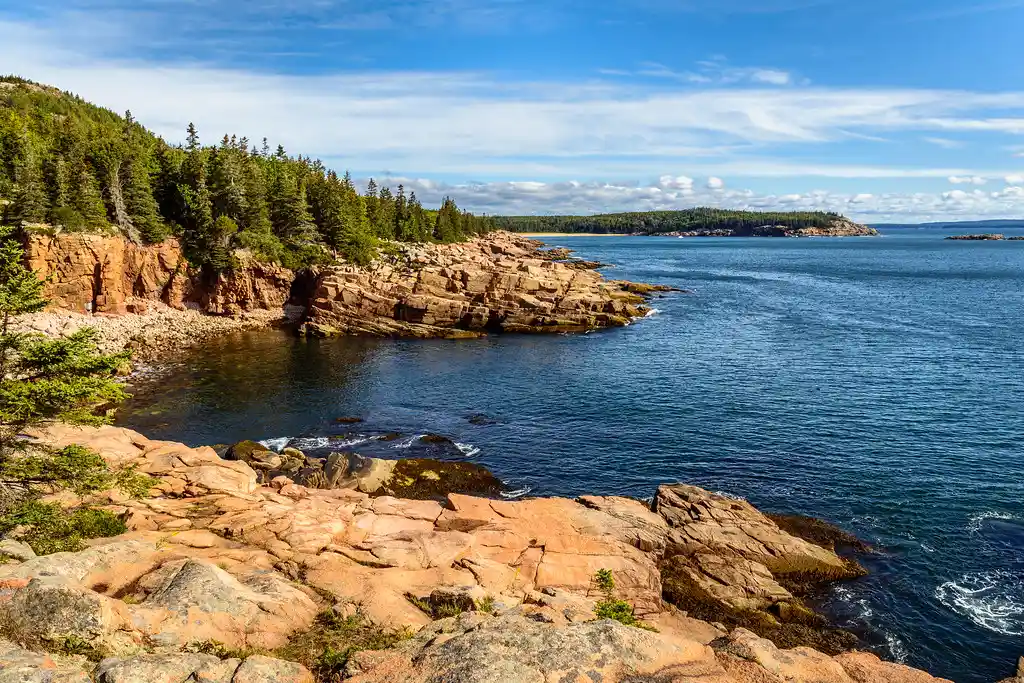
Acadia National Park was my first taste of Maine’s raw coastal beauty back in 2015. Perched along the Atlantic shoreline, this park is where the mountains meet the sea in a display that feels almost European in character. Granite peaks and rocky beaches define much of the landscape here, while dense forests of spruce and fir trees blanket the inland areas. The Blackwoods Campground, nestled among old-growth trees, offers campers front-row seats to the morning symphony of waves crashing against Thunder Hole. The park’s network of hiking trails leads to spots like Cadillac Mountain, where you can be among the first people in the United States to watch the sunrise peek over the horizon. At night, the stars put on their own show, twinkling bright and clear above the Atlantic waters.
Yosemite National Park, California
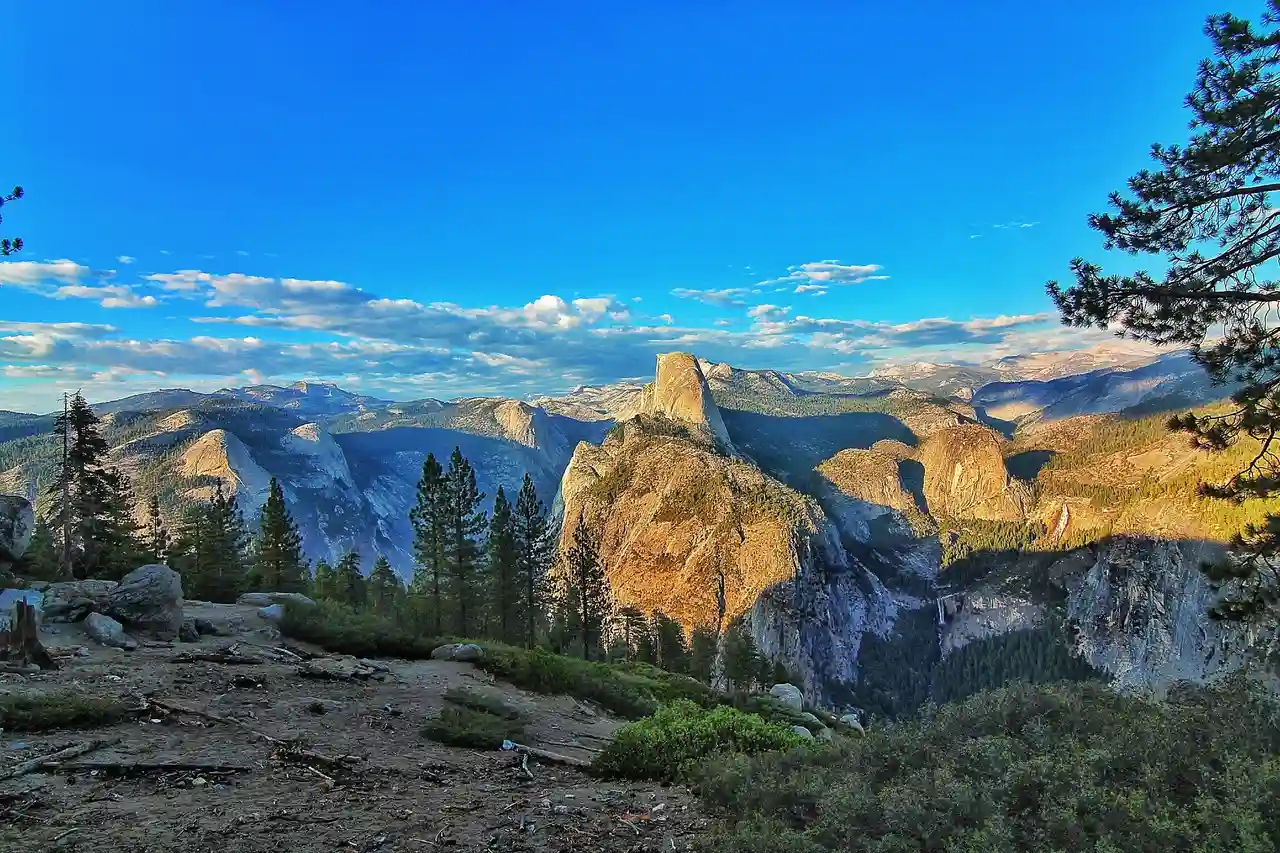
Sitting in the heart of California’s Sierra Nevada mountains, Yosemite National Park is where granite giants meet rushing waterfalls and ancient sequoia groves. Unlike other national parks that peak in different seasons, Yosemite truly comes alive in summer when its meadows burst with wildflowers and its hiking trails beckon campers from around the world. The park’s massive rock formations, like Half Dome and El Capitan, stand watch over the valley floor where black bears roam freely and deer graze in golden meadows. Thanks to its role in early conservation efforts, much of Yosemite remains unchanged since John Muir first advocated for its protection, and you’ll find historic lodges and primitive campgrounds that still capture that old-world wilderness feel.
Grand Teton National Park, Wyoming
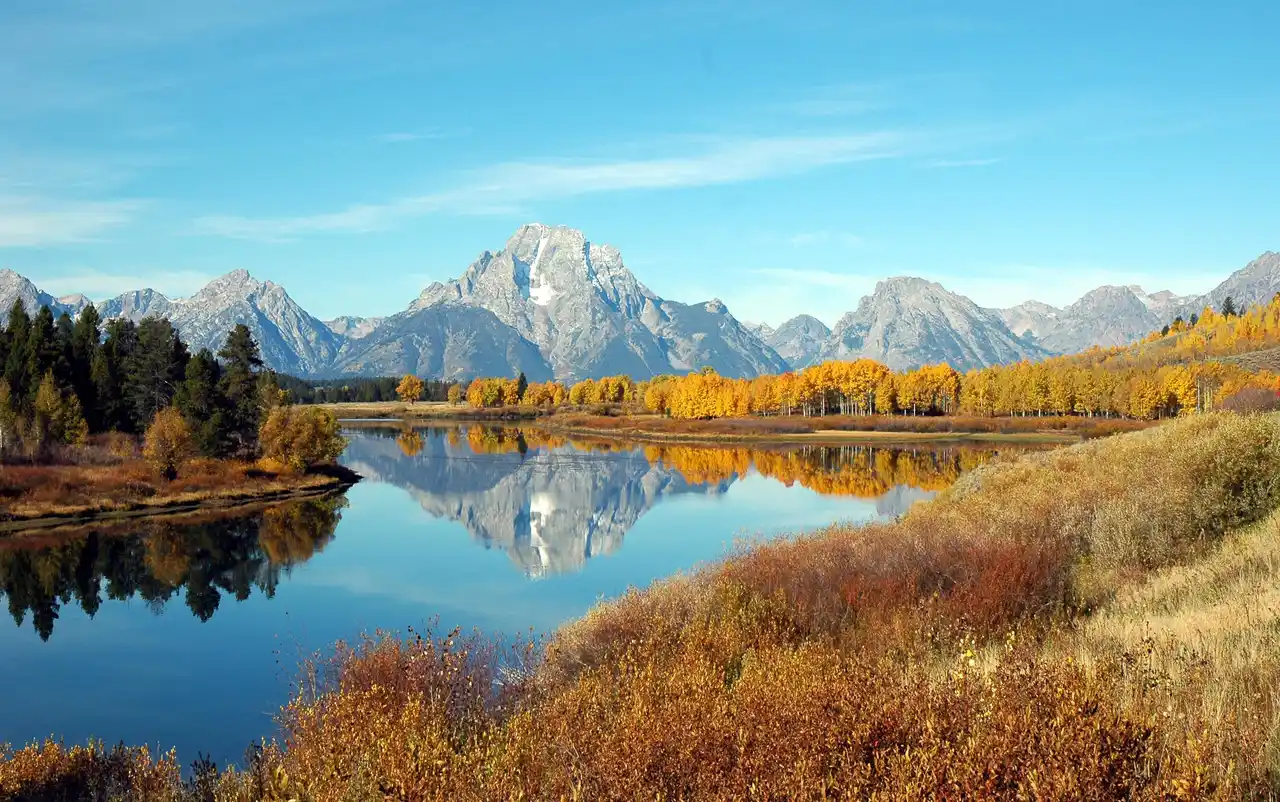
Many travelers head to Grand Teton National Park for its famous jagged mountain range, but this Wyoming gem offers much more than peaks and alpine views. The park’s diverse landscape includes crystal-clear lakes, winding rivers, and meadows filled with wildflowers during summer months. While hiking and climbing draw outdoor enthusiasts to the park’s 310,000 acres, visitors can also spot wildlife like moose, elk, and bears roaming freely in their natural habitat. The Snake River provides opportunities for fishing and floating, while the historic Mormon Row barns offer photographers perfect shots of rustic American West architecture against the mountain backdrop.
White Mountain National Forest, New Hampshire
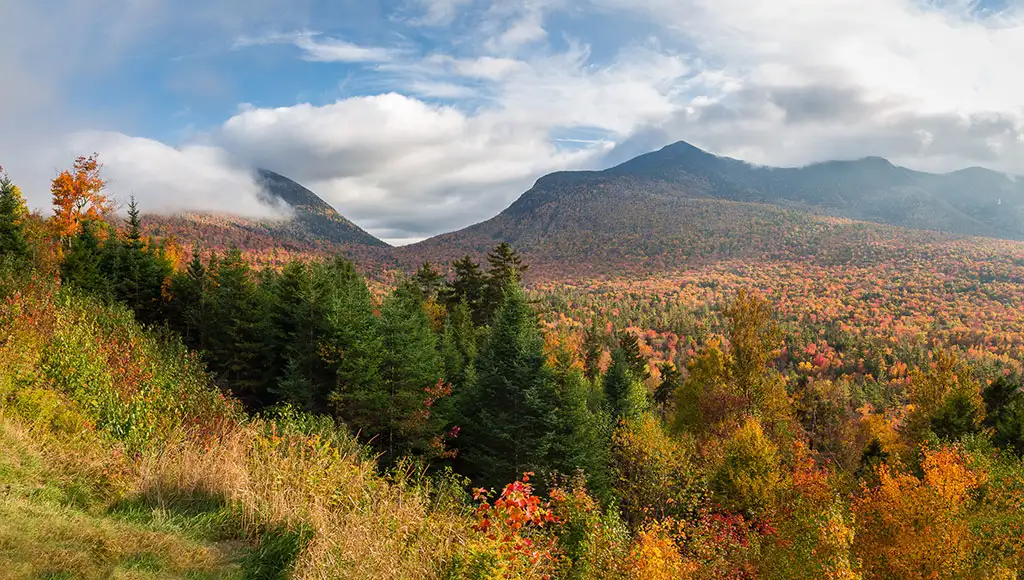
Ever wondered what it’s like to camp among New England’s highest peaks? White Mountain National Forest in New Hampshire is where hikers and nature lovers find their happy place among 800,000 acres of rugged wilderness. This sprawling forest, just a few hours from Boston, offers some of the most rewarding trails in the Northeast, including parts of the famous Appalachian Trail. In summer, you can pitch your tent at one of the many campsites scattered throughout the forest, wake up to the sound of rushing streams, and spend your days exploring dense woods filled with moose and black bears. The best part? When you’re ready for a break from the wilderness, you can pop into one of the cozy mountain towns nearby for a hot meal and some classic New Hampshire maple syrup.
Lake Tahoe, California/Nevada
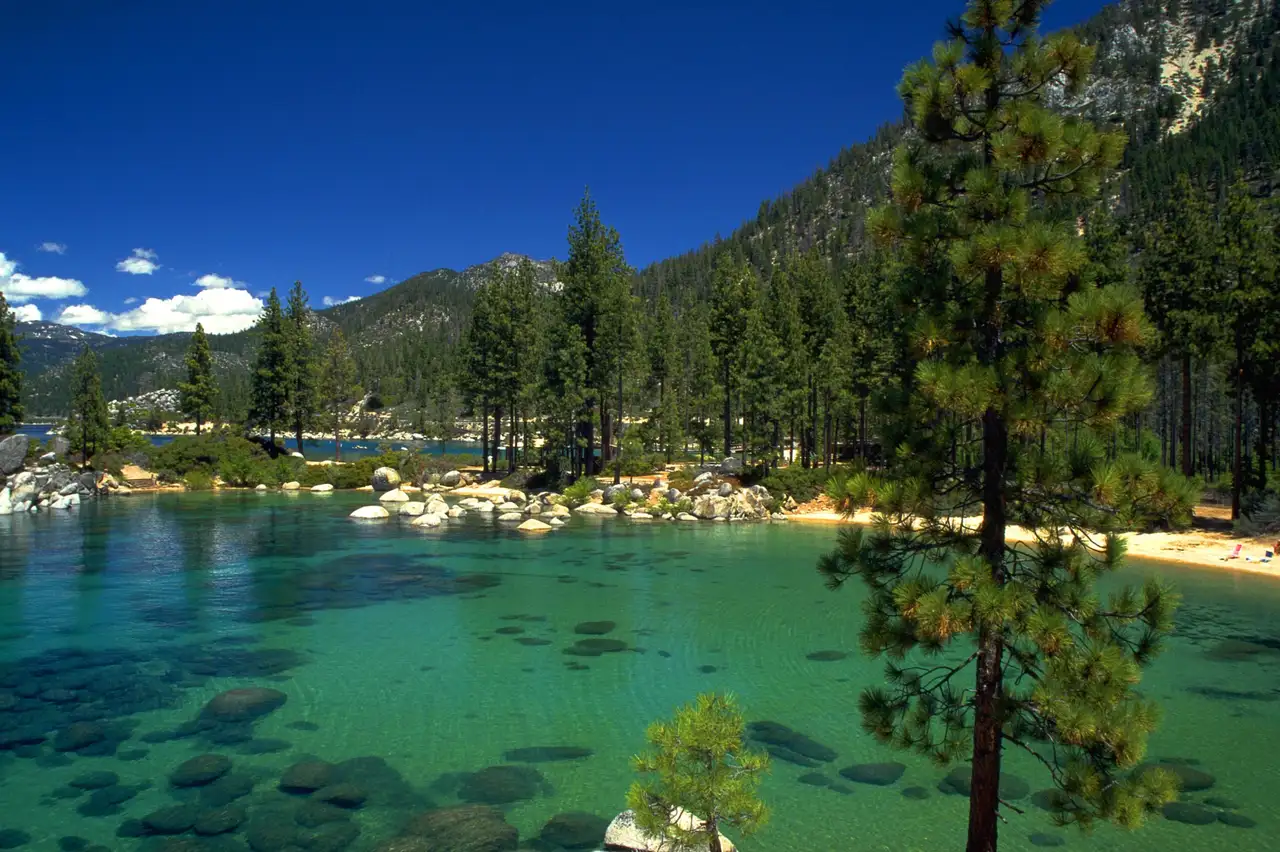
Lake Tahoe is where I send anyone looking for the perfect mix of beach and mountain camping. Straddling the California-Nevada border, this crystal-clear alpine lake sits at 6,225 feet elevation, surrounded by pine forests and granite peaks. You can pitch your tent at spots like D.L. Bliss State Park on the western shore, where campsites offer easy access to both sandy beaches and hiking trails leading into the Sierra Nevada mountains.
Crater Lake National Park, Oregon
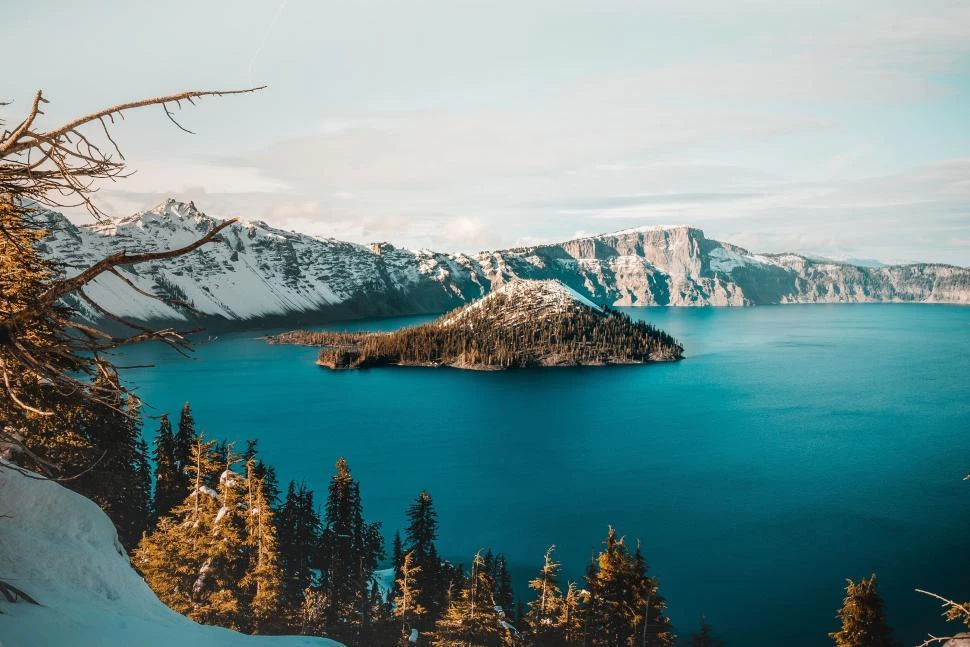
Crater Lake draws me back year after year, and it’s easy to see why. This deep blue wonder, formed thousands of years ago by a collapsed volcano, sits like a jewel in southern Oregon’s wilderness. The lake’s crystal-clear waters reach depths of nearly 2,000 feet, making it the deepest lake in America. Camping here puts you right on the doorstep of outdoor adventure – from hiking the rim trail for sweeping views of the water to taking boat tours that get you up close to the lake’s unique volcanic features. Just keep in mind that the camping season is shorter than most places due to heavy winter snowfall, but those who time it right between July and September get to experience some of the clearest stargazing and purest mountain air you’ll find in the Pacific Northwest.
Glacier National Park, Montana
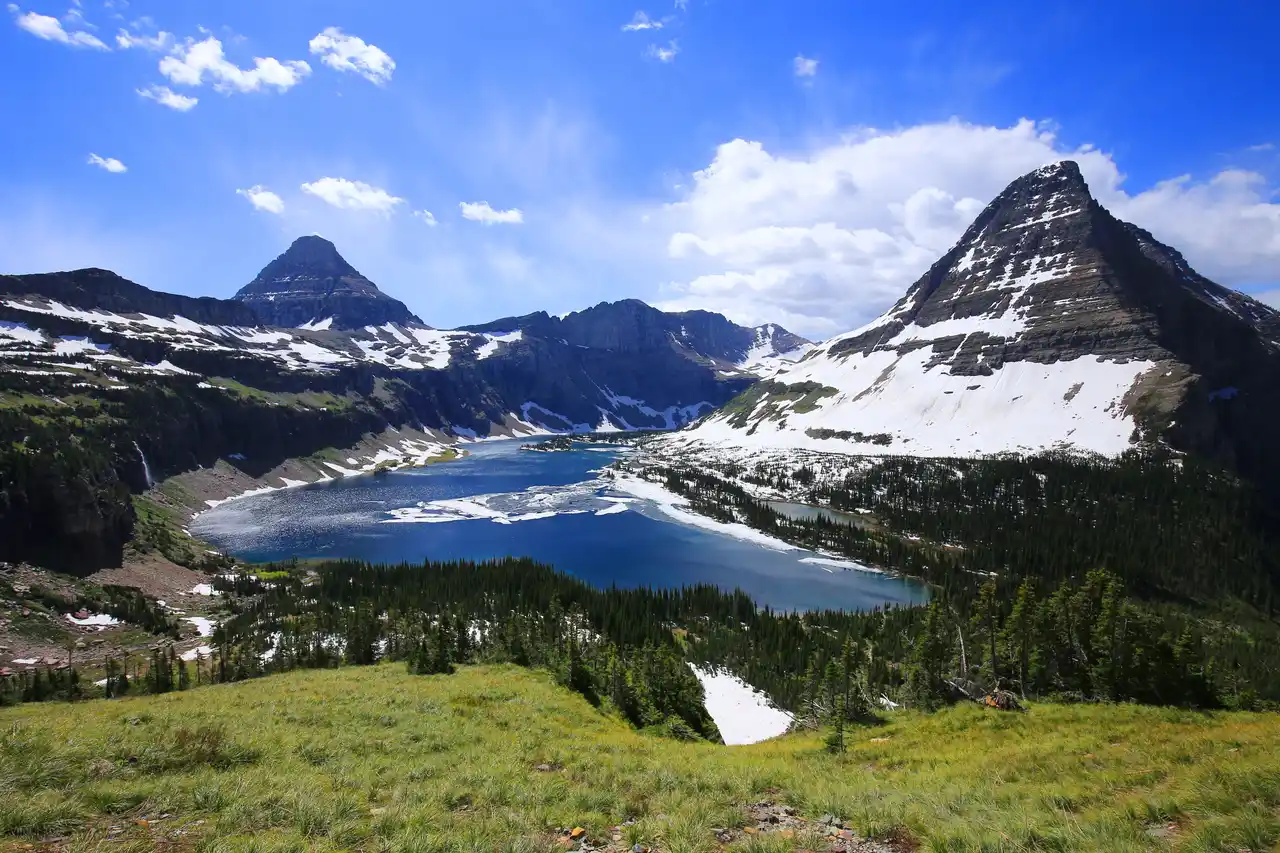
Tucked away in Montana’s remote wilderness, Glacier National Park ranks high on my list of America’s most impressive natural wonders. This million-acre paradise is home to over 700 miles of hiking trails that wind past ancient glaciers, crystal-clear lakes, and jagged peaks that seem to pierce the sky. You can pitch your tent at one of the park’s 13 campgrounds, where the stargazing is second to none and the chance of spotting mountain goats or grizzly bears adds an extra thrill to your morning coffee. The Going-to-the-Sun Road, a 50-mile scenic drive that cuts through the heart of the park, offers easy access to some of the best camping spots – though you’ll want to book well in advance during peak summer months.
Olympic National Park, Washington
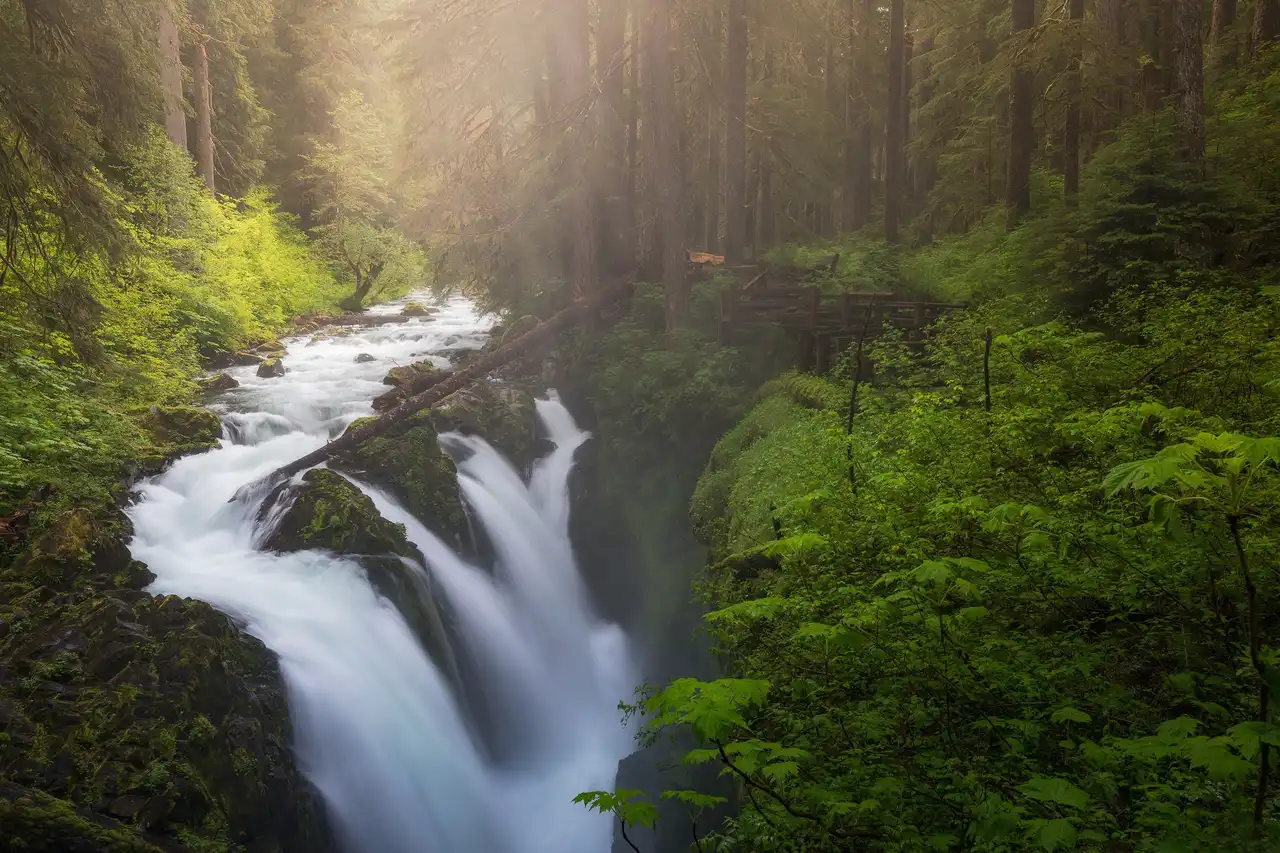
Want to camp in three different ecosystems in one trip? That’s exactly what you’ll find at Olympic National Park, where mossy rainforests, rugged Pacific beaches, and snow-capped mountains all come together. Just a few hours from Seattle, this park lets you wake up to Roosevelt elk grazing outside your tent in the Hoh Rainforest, spend your afternoon tidepooling along the rocky shores of Ruby Beach, and end your day watching the sunset from the alpine meadows of Hurricane Ridge. The campgrounds here are open year-round, but summer brings the perfect conditions for exploring all these diverse landscapes without the typical Pacific Northwest rain getting in your way.
Rocky Mountain National Park, Colorado

When it comes to camping in America’s wilderness, Rocky Mountain National Park stands as one of the most memorable spots I’ve experienced. This 265,000-acre park rises from meadowland valleys at 8,000 feet to snow-capped peaks topping 14,000 feet, creating an outdoor playground that draws campers from across the globe. The park’s five campgrounds offer different ways to experience Colorado’s mountain magic – from the popular Moraine Park with its elk-watching opportunities to the more remote Wild Basin area where you’ll often have the stars to yourself. It’s not just about pitching a tent here – the park’s 355 miles of hiking trails, crystal-clear alpine lakes, and abundant wildlife make it a true mountain paradise. If you’re lucky, you might spot bighorn sheep scaling rocky cliffs or hear the distinctive call of marmots echoing across the tundra.
Adirondack Mountains, New York

I first visited the Adirondacks on a summer camping trip in 2015, drawn to its reputation as New York’s premier wilderness playground. Spanning six million acres across upstate New York, the Adirondack Mountains create a natural mosaic of peaks, lakes, and dense forests. The region centers around Lake Placid, the two-time Winter Olympics host town, but it’s the 46 High Peaks and countless backcountry camping spots that make this place special for outdoor enthusiasts. The well-maintained trails and designated camping areas provide easy access to nature, while the crystal-clear lakes offer perfect spots for swimming and kayaking. When night falls, the dark skies above the mountains reveal a dazzling display of stars, making those campfire moments even more memorable.
Lake Superior State Forest, Michigan
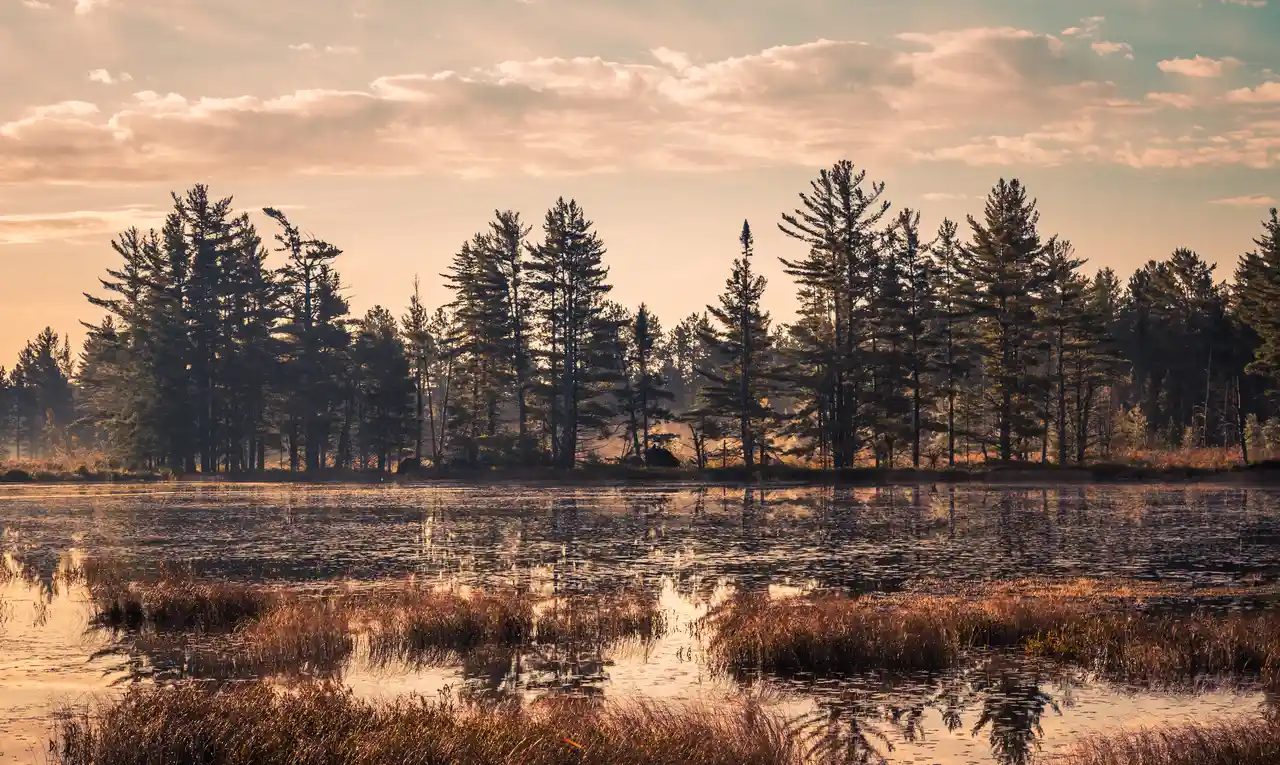
I first discovered Lake Superior State Forest during a spontaneous road trip through Michigan’s Upper Peninsula in 2019. Stretching across thousands of acres along Lake Superior’s shoreline, this vast wilderness area offers some of the most secluded camping in the Midwest. Dense pine forests and crystal-clear inland lakes dot the landscape here, while rustic campgrounds like Andrus Lake and Bass Lake provide peaceful spots to pitch a tent. The forest’s network of hiking trails winds through quiet woodlands and along rocky Lake Superior beaches, where you can watch freighters pass by on the horizon. At night, the lack of light pollution makes it one of the best places in Michigan to stargaze, with the Milky Way stretching across the dark sky in full view.
Big Sur, California
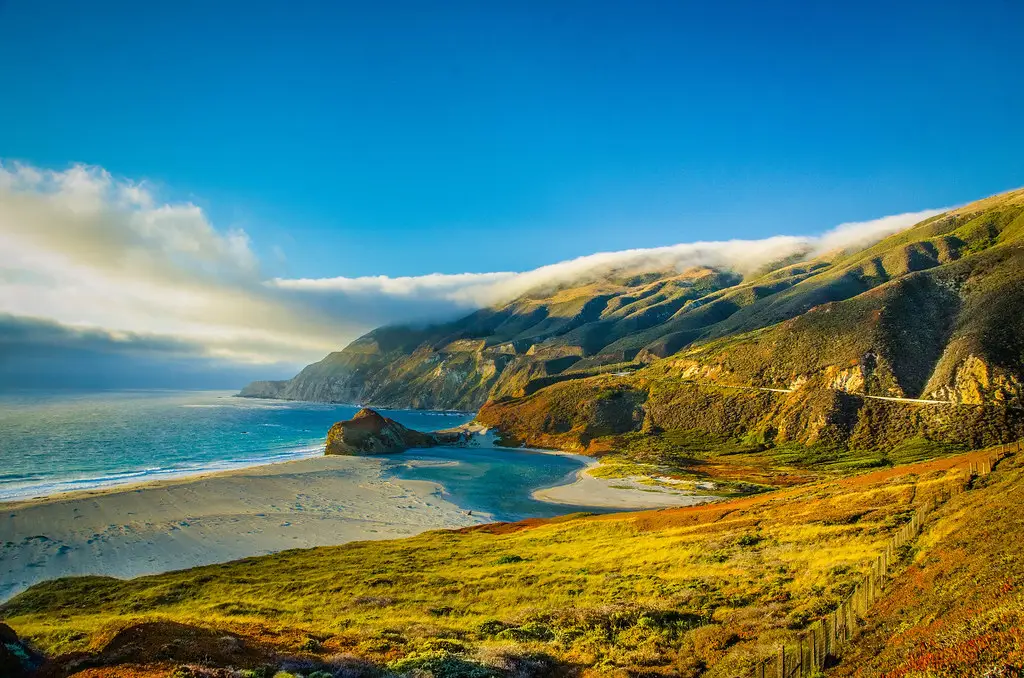
Perched along California’s central coast, Big Sur offers a camping experience where the mountains dramatically meet the sea. Unlike typical beach destinations, this rugged stretch of coastline combines redwood forests, hidden coves, and cliffside views that make you feel like you’ve stepped into a postcard. The region’s fog-kissed mornings give way to sunny afternoons perfect for hiking, while evenings bring out the stars in full force. Thanks to its remote location and limited development, Big Sur remains one of the few places in California where you can wake up to the sound of crashing waves, spot whales from your campsite, and end your day with s’mores under ancient redwoods. The area’s rustic campgrounds, scattered throughout state parks like Pfeiffer Big Sur and Julia Pfeiffer Burns, put you right in the middle of this natural playground.
Shenandoah National Park, Virginia
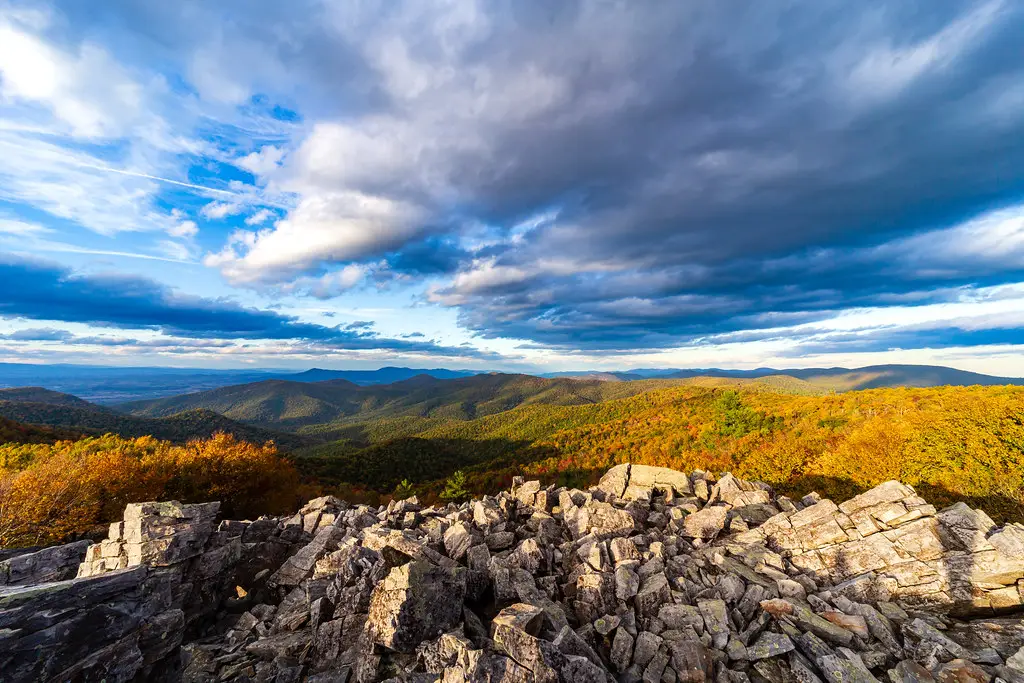
Just a few hours west of Washington D.C., Shenandoah National Park stretches along the Blue Ridge Mountains of Virginia. While many national parks boast incredible hiking trails and wildlife viewing, Shenandoah sets itself apart with the famous Skyline Drive – a 105-mile road that winds through the heart of the park. As you drive or hike through the dense forests, you’ll spot white-tailed deer grazing in meadows and black bears foraging among the trees. Because of its location in the Appalachian Mountains, the park transforms with each season, but summer brings lush greenery and cool mountain streams perfect for camping. The park’s rich history includes stories of mountain families who lived here before it became protected land in 1935, and you can still see remnants of their homesteads scattered throughout the wilderness.
Great Smoky Mountains, Tennessee/North Carolina
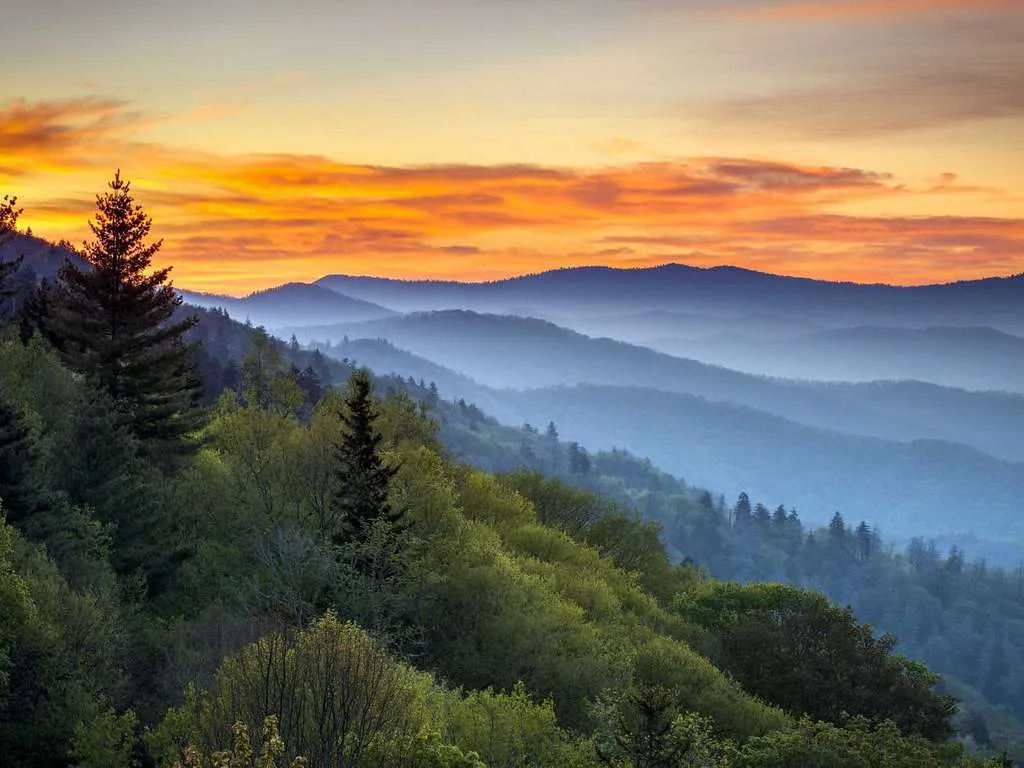
Ever spotted a black bear ambling through a misty forest? It’s a regular occurrence in Great Smoky Mountains National Park, where the Appalachian mountains stretch across Tennessee and North Carolina like a rolling green blanket. The most visited national park in America offers more than 800 miles of hiking trails through dense forests and wildflower meadows, where you can pitch your tent under a canopy of stars. From May to August, you can catch the magical evening display of synchronous fireflies, one of nature’s rarest light shows. The park’s Cades Cove and Elkmont campgrounds put you right in the middle of this wilderness playground, where morning fog dances around mountain peaks and clear streams beckon you to dip your toes in their cool waters.
Zion National Park, Utah

I first visited Zion National Park on a summer road trip through Utah in 2019. One of the most remarkable parks in the American Southwest, Zion sits nestled between massive sandstone cliffs in the heart of canyon country. Towering red rock formations and winding river valleys make up most of the landscape here, along with the famous Angels Landing trail that snakes its way up to panoramic views. The Watchman Campground, tucked beneath the park’s iconic peaks, offers the perfect basecamp for exploring Zion’s narrow canyons and hidden waterfalls. At night, the lack of light pollution treats campers to an incredible display of stars, making it easy to understand why early Mormon settlers named this place after their heavenly paradise.
Denali National Park, Alaska

For outdoor enthusiasts seeking true wilderness, Denali National Park stands in a league of its own. This massive 6-million-acre park centers around North America’s tallest peak, where grizzly bears roam freely and caribou migrate across the tundra. The park’s single 92-mile road takes you deep into raw Alaskan backcountry, where designated campgrounds serve as basecamps for hiking unmarked trails and watching for moose, wolves, and Dall sheep. It’s not your typical drive-up camping experience – you’ll need to be prepared for sudden weather changes and keep your distance from wildlife – but the chance to sleep under the midnight sun while surrounded by untamed nature makes it worth every effort.
Joshua Tree National Park, California
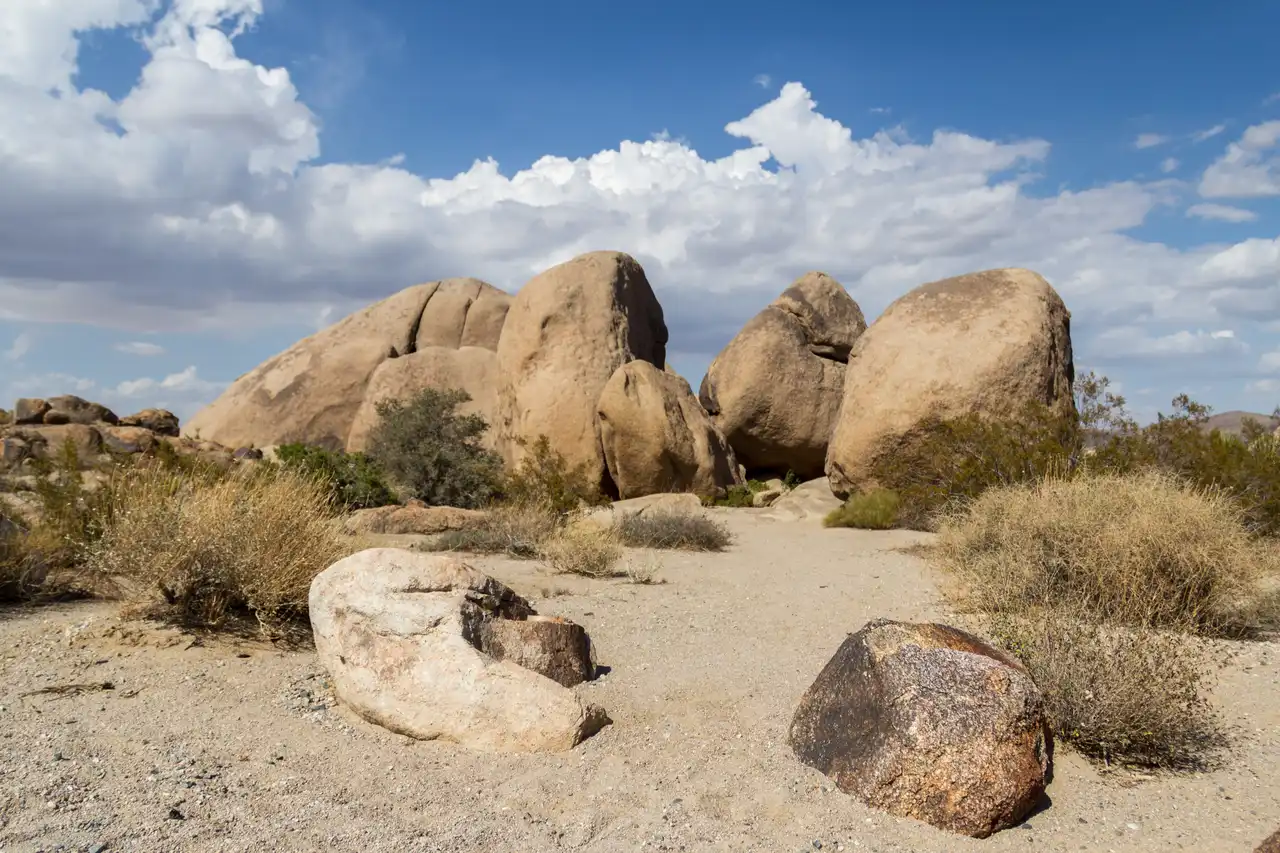
Step into a desert wonderland at Joshua Tree National Park, where two distinct ecosystems meet to create a unique landscape. The park’s famous Joshua trees dot the terrain like natural sculptures, while massive granite boulders create a playground for rock climbing enthusiasts. During summer evenings, temperatures cool down enough for comfortable camping, and the clear desert skies offer some of the best stargazing in California. Set up your tent at one of the nine campgrounds, like the popular Jumbo Rocks or Hidden Valley, where you can wake up surrounded by the park’s distinctive rock formations and desert flora.
Boundary Waters Canoe Area Wilderness, Minnesota
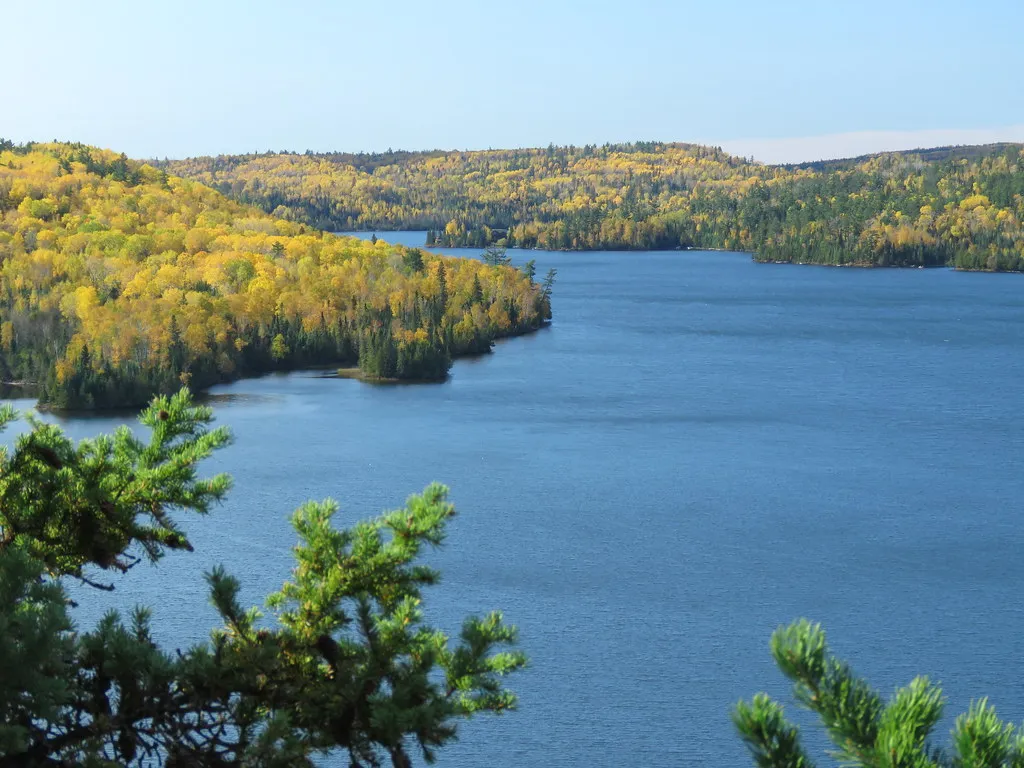
If you’re looking for a true wilderness escape, I always recommend the Boundary Waters Canoe Area in Minnesota. Stretching along the Canadian border with over 1,000 pristine lakes and streams, this million-acre paradise lets you paddle from lake to lake, camp on secluded islands, and spot wildlife like moose, wolves, and bald eagles in their natural habitat.
Mount Rainier National Park, Washington
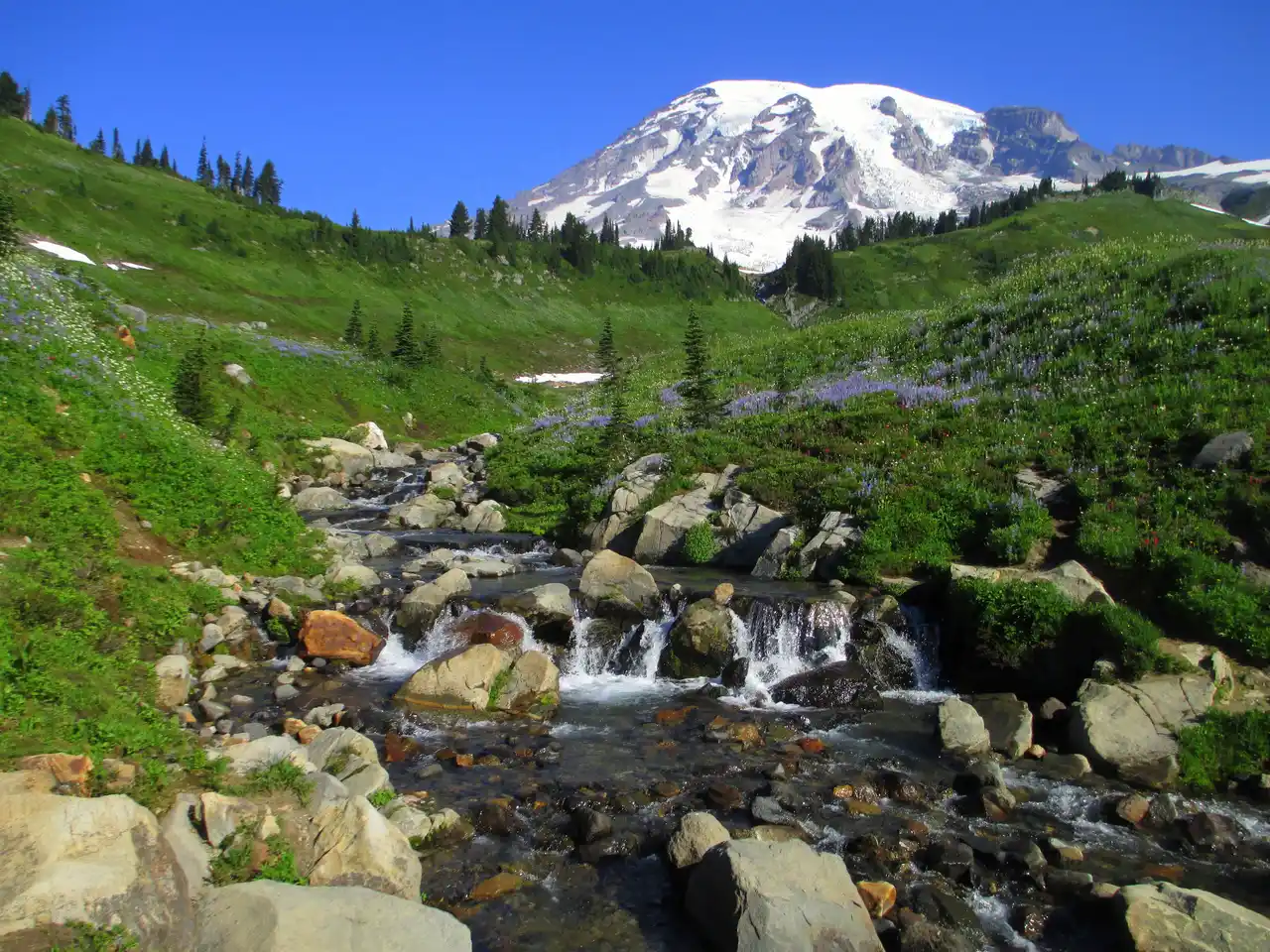
Step into a Pacific Northwest paradise at Mount Rainier National Park, where the iconic snow-capped peak towers over 14,000 feet above sea level. The park offers more than 250 miles of maintained trails that wind through old-growth forests and colorful wildflower meadows. For a memorable camping experience, set up at Cougar Rock Campground, which puts you right in the heart of the action with easy access to the Paradise area’s popular hiking trails. If you’re feeling adventurous, take the 5.5-mile Skyline Trail loop for up-close views of the glacier-covered mountain and, on clear days, glimpses of Mount Adams and Mount Hood in the distance.

